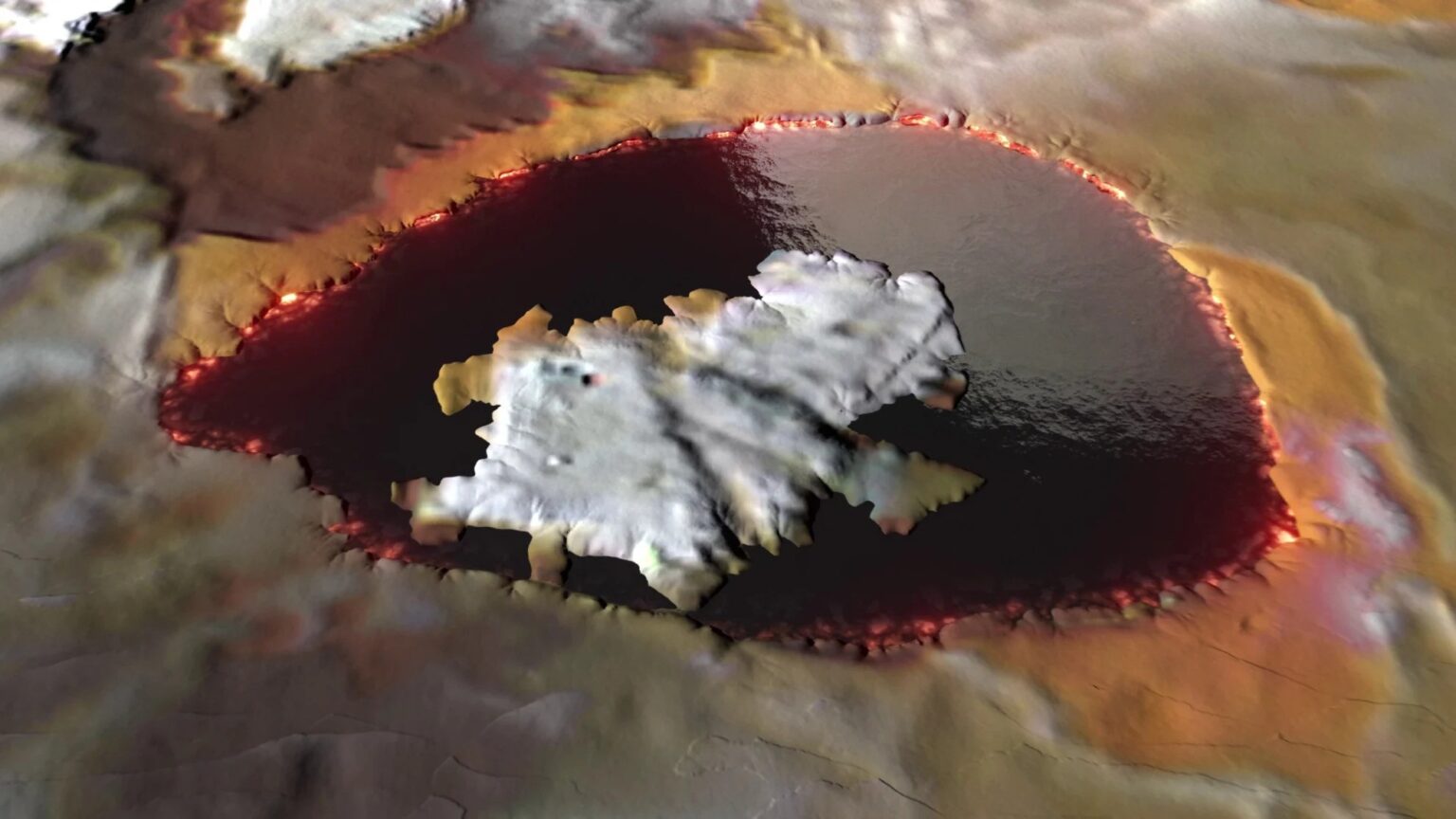Io is a moon of Jupiter, which is one of the most volcanically active bodies in the Solar System. It has entire lava lakes on it. Some time ago, the Juno spacecraft was able to look at them properly and now scientists have published an article about it.

Volcanic activity on Jupiter’s moon
New data from NASA’s Juno probe provides a better understanding of how widespread lava lakes are on Jupiter’s moon Io and, for the first time, provides insight into the volcanic processes taking place there. These results come thanks to Juno’s Jovian Infrared Auroral Mapper (JIRAM) instrument, developed by the Italian Space Agency. It “sees” in infrared light. The researchers published an article about the latest volcanic discoveries made by the probe in the journal Communications Earth and Environment.
Io has intrigued astronomers since 1610, when Galileo Galilei first discovered Jupiter’s moon, which is slightly larger than Earth. After 369 years, NASA’s Voyager-1 spacecraft recorded a volcanic eruption on it. Subsequent missions to the Solar System’s largest planet have discovered additional volcanic plumes on it as well as lava lakes.
Scientists now believe that Io, which is stretched and compressed like an accordion by neighboring moons and massive Jupiter, is the most volcanically active planet in the Solar System. But while there are many theories as to the types of volcanic eruptions on the moon’s surface, there is still little supporting data.
Juno flew past Io in May and October 2023, coming within about 35,000 km and 13,000 km, respectively. Among the Juno instruments that allowed a good look at the tantalizing moon was JIRAM.
Lava Lakes
Designed to capture infrared light emanating from deep inside Jupiter, JIRAM explores the weather layer at depths of 30 to 45 to 50 to 70 kV beneath the gas giant’s cloud tops. But during the extended Juno mission, the mission team also used it to study the moons of Io, Europa, Ganymede and Callisto. JIRAM images of Io showed the presence of bright rings surrounding numerous hot spots.
“The high spatial resolution of JIRAM’s infrared images, combined with the favorable position of Juno during the flybys, revealed that the whole surface of Io is covered by lava lakes contained in caldera-like features,” said Alessandro Mura, co-investigator of Juno at the National Institute of Astrophysics in Rome. “In the region of Io’s surface in which we have the most complete data, we estimate about 3% of it is covered by one of these molten lava lakes.”
Results of new research
The data obtained by JIRAM during its flyby of Io not only highlights the moon’s rich lava reserves, but also provides a glimpse of what may be going on beneath its surface. Infrared images of several of Io’s lava lakes show a thin circle of lava at the boundary between the central crust that covers most of their surface and walls. The absence of fire streams at the edge of the lake and beyond indicates that there is a balance between the melt that erupts into the lava lakes and that which flows back into the depths of the moon.
“We now have an idea of what is the most frequent type of volcanism on Io: enormous lakes of lava where magma goes up and down,” said Mura. “The lava crust is forced to break against the walls of the lake, forming the typical lava ring seen in Hawaiian lava lakes. The walls are likely hundreds of meters high, which explains why magma is generally not observed spilling out of the paterae”—bowl-shaped features created by volcanism—”and moving across the moon’s surface.”
JIRAM data suggest that much of the surface of these Io hotspots consists of rocky crust that cycles up and down as one continuous surface due to a central upward magma flow. According to this hypothesis, as the crust touches the walls of the lake, friction keeps it from sliding, causing it to deform and eventually rupture, exposing the lava that lies beneath the surface.
According to phys.org


